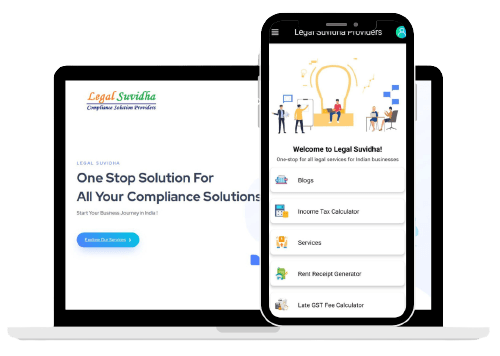ISO 27001: Information Security Management
ISO 27001: Information Security Management – A Simple Guide In today’s digital world, keeping sensitive information safe is more important...
Phase II Soil and Groundwater Investigations are a crucial component of the environmental site assessment process. These investigations are conducted to determine the extent and nature of contamination in soil and groundwater and evaluate the potential risks to human health and the environment.

Happy Clients
Years Experience

Happy Clients
Years Experience
The Phase II investigation process may include the installation of monitoring wells to collect groundwater samples and the excavation of soil to collect soil samples. The samples are then analyzed in a laboratory to determine the types and levels of contaminants present.
The information obtained from the investigation is used to develop a remediation plan that outlines the necessary measures to clean up the contamination and mitigate the risks to human health and the environment. The remediation plan may involve excavation and removal of contaminated soil, installation of groundwater treatment systems, or other methods depending on the nature and extent of contamination.
Overall, Phase II Soil and Groundwater Investigations play a critical role in identifying and evaluating the risks posed by environmental contamination and developing effective remediation strategies to protect human health and the environment.
| Identifying the Extent of Contamination | Phase II investigations provide a detailed understanding of the extent and nature of contamination in the soil and groundwater. This information is essential in developing an effective remediation plan and ensuring that all contaminated areas are identified and addressed |
| Assessing the Risks to Human Health and the Environment | Phase II investigations evaluate the potential risks to human health and the environment posed by the contamination. This information is used to develop appropriate mitigation measures and protect the health and safety of the community and environment |
| Compliance with Environmental Regulations | Phase II investigations are often required by environmental regulations to ensure compliance with applicable standards and guidelines. Completing these investigations and following through with remediation actions can help avoid potential legal and financial liabilities |
| Cost Savings | Phase II investigations can help identify the most cost-effective remediation solutions, reducing overall costs associated with cleanup efforts. Additionally, identifying contamination early on can help avoid costly cleanup efforts in the future |
| Improved Community Relations | Phase II investigations and associated cleanup efforts demonstrate a commitment to environmental responsibility and can improve community relations. Communities often appreciate proactive steps to address environmental concerns, which can lead to improved trust and goodwill between the industry and the community. |
The Phase II Soil and Groundwater Investigations typically involves the following steps:
Step 1: Site Characterization: The first step in the Phase II investigation is site characterization, which involves collecting information about the site’s history, geology, hydrogeology, and other relevant information. This information helps determine where and how to sample soil and groundwater.
Step 2: Sampling: Soil and groundwater samples are collected from locations determined in the site characterization phase. The number and location of samples depend on the site’s size, the potential sources of contamination, and the regulatory requirements.
Step 3: Laboratory Analysis: The collected soil and groundwater samples are analyzed in a laboratory to identify the types and levels of contaminants present. The results are compared to regulatory guidelines to determine if the site requires remediation.
Step 4: Risk Assessment: The risk assessment is conducted to evaluate the potential risks to human health and the environment. The results of the laboratory analysis are used to determine the level of risk posed by the contamination and whether further remediation is necessary.
Step 5: Remediation Planning: Based on the results of the risk assessment, a remediation plan is developed. The remediation plan outlines the necessary measures to clean up the contamination and mitigate the risks to human health and the environment. The plan may involve excavation and removal of contaminated soil, installation of groundwater treatment systems, or other methods depending on the nature and extent of contamination.
Step 6: Implementation of Remediation: Once the remediation plan is approved, the actual cleanup process begins. The cleanup process can take several months or even years, depending on the extent of contamination and the remediation method used.
Step 7: Monitoring and Verification: After the cleanup process is complete, the site is monitored to ensure that the remediation was successful. The site is regularly monitored to ensure that the contamination has not returned, and the remediation objectives have been met.
Overall, the Phase II Soil and Groundwater Investigations require a systematic and thorough approach to identify and evaluate the risks posed by environmental contamination and develop effective remediation strategies to protect human health and the environment.
1.Phase I Environmental Site Assessment Report
2.Sampling and Analysis Plan (SAP)
3.Health and Safety Plan (HASP)
4.Chain of custody forms for sample collection
5.Laboratory analytical results
6.Risk Assessment Report
7.Remediation Plan
8.Approval from regulatory authorities for the remediation plan
9.Implementation and monitoring plan
10.Ongoing monitoring reports
An intrusive excavation of the ground is required for a Phase 2 Site Investigation, the second stage of a phased Contaminated Land Assessment. Local planning authorities frequently demand that you release planning restrictions, get rid of objections, and support planning applications.
The scope of work and conclusions are outlined in a Phase II ESA report, which may include, depending on the project’s goals: field observations, screening results, and any other relevant field data. groundwater depth. results of laboratory analysis.
Whether there are any unacceptable dangers to people, property, or the environment will be determined by this. The information provided by the contaminated land report determines the kind of work that is necessary.
Geologists dig and collect soil, soil vapour, and groundwater as part of a Phase 2 Environmental Site Assessment or Phase II Environmental report to look for pollution.
#answer
#answer
#answer
#answer
With a commitment to exceeding expectations and a passion for delivering results, choosing us means choosing a partner dedicated to your success.

We provide free of cost consultation and legal advice to our clients.

We are a team of more than 15+ professionals with 11 years of experience.


All our services are online no need you to travel from your place.

There are no hidden & extra charges* other than the quote/invoice we provide.

We aim that all our customers are fully satisfied with our services.

We value your time and we promise all our services are delivered on time.

We provide free of cost consultation and legal advice to our clients.
In this Journey of the past 14+ years, we had gained the trust of many startups, businesses, and professionals in India and stand with a 4.9/5 rating in google reviews.We register business online and save time & paperwork.
Trustindex verifies that the original source of the review is Google. Mayank & the Legal Suvidha team are fantastic. They really try to understand the business like insiders and don't give you templatized solutions. The staff are extremely supportive and go out of their way to help you. I would recommend Mayank to anybody new to the startup ecosystem!Trustindex verifies that the original source of the review is Google. Great experience with smooth process during the startup india registration Excellent coordination and teamwork with effective implementation in very limited timeTrustindex verifies that the original source of the review is Google. Sound expertise, good coordination, efficient and timely execution.Trustindex verifies that the original source of the review is Google. Good service and very helpfulTrustindex verifies that the original source of the review is Google. We had a great experience working with the LegalSuvidha team - we have used them for both our Pvt Ltd and LLP formation and their team has been very proactive, knowledgeable, prompt and helpful. They helped with all DSCs as well and couriered them to us. Very professional and thorough. We also got our Startup India , MSME registrations through them promptly. Overall highly recommended. Special callout to Nidhi, Saloni, Anjalin, Shreya and Priyanka for promptly helping us throughout the process.Trustindex verifies that the original source of the review is Google. I am writing to thank you for the quality of service provided by your company. We sincerely appreciate your efficient, gracious customer service, the level of detail and accountability you have demonstrated and the way you conduct business as a whole. A special Thanks to Ms Saloni for her great help throughout.Verified by TrustindexTrustindex verified badge is the Universal Symbol of Trust. Only the greatest companies can get the verified badge who has a review score above 4.5, based on customer reviews over the past 12 months. Read more


Explore more of our blogs to have better clarity and understanding
of the latest corporate & business updates.
ISO 27001: Information Security Management – A Simple Guide In today’s digital world, keeping sensitive information safe is more important...
Operating an online store comes with numerous benefits—but also regulatory obligations. Securing the right licenses and permits is essential to...
Directors shape a company’s governance and strategic direction. Among board members, Executive Directors and Non‑Executive Directors (NEDs) play distinct yet...
The Articles of Association (AOA) form the backbone of a company’s internal governance, setting out the rules, rights, and responsibilities...
Selecting the optimal legal form is a critical decision when launching your U.S. venture. Both LLCs and Corporations offer liability...
Expanding your U.S.-based business into India unlocks access to a vast consumer market, a skilled workforce, and cost advantages—but also...
Here are some answers to potential questions that may arise as you start your business.
Register your business, obtain necessary licenses, and fulfill tax obligations.
Consider factors like ownership, liability, and tax implications to choose from options like sole proprietorship, partnership, or company registration.
Choose a unique business name, obtain required IDs like Director Identification Number (DIN), and file incorporation documents with the Registrar of Companies (ROC).
Obtain GST registration, trade licenses, and any industry-specific permits required to operate legally.
Maintain accurate financial records, file tax returns on time, and adhere to the tax laws applicable to your business.
Yes, startups in India can benefit from various government schemes offering tax exemptions, funding support, and incubation facilities.
Secure patents, trademarks, or copyrights to safeguard your intellectual assets from infringement or unauthorized use.
Challenges include navigating bureaucratic hurdles, complying with complex regulations, and competing in a crowded marketplace.
Looking For More Information? Contact Us
Sign up to receive email updates on new product announcements, special promotions, sales & more.
Redefining the experience of legal services. Now all Professional Services in a Single Click !


Copyright © 2025 Legal Suvidha Providers LLP. All rights reserved.
